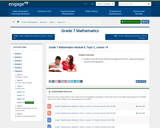
In this lesson, students describe three-dimensional figures built from cubes by looking at horizontal slicing planes.
- Subject:
- Mathematics
- Material Type:
- Lesson Plan
- Provider:
- EngageNY
- Date Added:
- 02/09/2017

In this lesson, students describe three-dimensional figures built from cubes by looking at horizontal slicing planes.

Students read a passage and answer questions based on the passage. An answer key is included.

Students see firsthand that stars and constellations are not arranged in a flat, 2-D pattern in this Moveable Museum unit. The five-page PDF guide includes suggested general background readings for educators, activity notes, step-by-step directions, and a Big Dipper map. Students make their own 3-D models of the Big Dipper using readily available materials and examine their models, observing the 3-D constellation from new perspectives.

This is a 3-dimensional model image of an ethylene molecule.
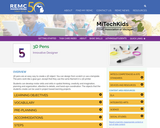
3D pens are an easy way to create a 3D object. You can design from scratch or use a template. The pens work like a glue gun, except that they use the same filament in a 3D printer. The objects that the students create can be used in project based learning projects.

In this lesson, students explore the artwork of Georges Seurat and create a masterpiece.
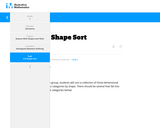
The purpose of this task is to familiarize students with the idea of defining and non-defining attributes of geometric figures.
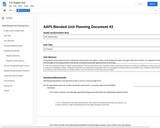
In this unit, students develop in-depth understanding of volume and surface area. Students should understand volume as a measure of filling and surface area as a measure of wrapping an object. Students should have the opportunity to generate their own strategies for finding volume and surface area. Students will be able to use patterns and rules/formulas for finding surface area and volume of three-dimensional shapes.

A 2-D map is a great guide here on Earth—and virtually worthless for finding your way around in outer space. Take a 3-D look at mapping our solar system and universe. This Moveable Museum article, available as a printable PDF file, looks at how astronomers use data to create 3-D models of the universe. Explore these concepts further using the recommended resources mentioned in this reading selection.

In order to contextualize the Energy unit, students are tasked to engineer a bungee cord that will optimize the enjoyment of a doll’s bungee jump. To do this, students first develop the mathematical patterns through inquiry on gravitational energy, kinetic energy, and elastic energy. Once the patterns have been established, students further build on their spreadsheet coding skills, in order to use computational thinking to create a program that will help predict the length of bungee cord necessary for a variety of situations.
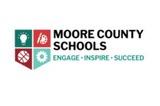
Students will listen to a close reading of The 3 Little Pigs over the course of 3 days. (Many versions are accessible via NC Kids Digital Library. Teacher discretion as to the story version. Personal copy or online versions can be used.) After each read aloud, students will have the opportunity to engage in The Engineering Design Process to create a new dwelling using materials of varying physical properties. Students will write to tell about their new dwelling design using sentence frames and an anchor chart for support. Finally, students will present their new dwellings and read their informational writing to reflect their knowledge of physical properties. Student informational writing should reflect physical properties such as size, color, shape, texture, weight and flexibility per the NC Kindergarten Science Standards.
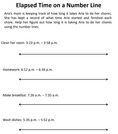
This resource is a worksheet for the standard 3.MD.1. It can be used as an exit ticket or as an independent practice. This could be used with a tech tool where students can draw directly on the document (Nearpod, Peardeck, Seesaw, Etc.)

This resource is a worksheet for the standard 3.MD.1. It can be used as an exit ticket or as an independent practice. This could be used with a tech tool where students can draw directly on the document (Nearpod, Peardeck, Seesaw, Etc.)

This resource is a worksheet for the standard 3.MD.1. It can be used as an exit ticket or as an independent practice. This could be used with a tech tool where students can draw directly on the document (Nearpod, Peardeck, Seesaw, Etc.)
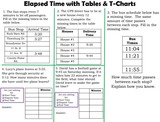
This resource is a worksheet for the standard 3.MD.1. It can be used as an exit ticket or as an independent practice. This could be used with a tech tool where students can draw directly on the document (Nearpod, Peardeck, Seesaw, Etc.)

This quiz gives a teacher insight on student learning for the standard 3.MD.5 (concept of area).

This quiz gives a teacher insight on student learning for the standard 3.MD.5 (concept of area). This quiz includes a short answer question which connects a real-word example problem for using area.
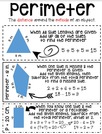
This resource is an anchor chart for the standard 3.MD.8. It includes the definition of perimeter, how to find perimeter when all side lengths are given, and how to find the missing side length when the perimeter of rectangles and other polygons are given. This resource could be added to a digital learning wall for students to refer back to throughout the school year as needed. (Padlet, Google Slides, Etc.)

This resource can be used through Google Slides or Peardeck. The Mini-Lesson will cover the following “I Can” Statement.I can find the missing side length of a rectangle when given the perimeter.

This resource can be used through Google Slides or Peardeck. The Mini-Lesson will cover the following “I Can” Statement.I can use the given perimeter to find all side lengths of a regular polygon.